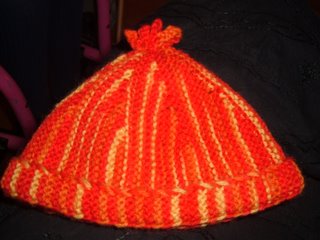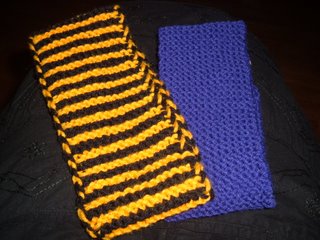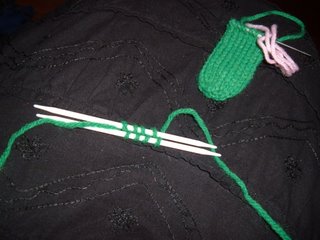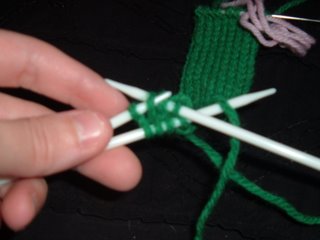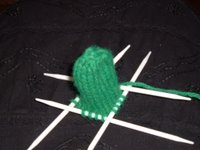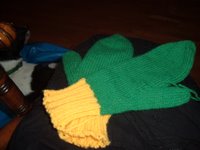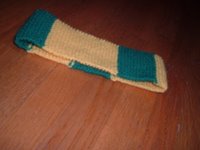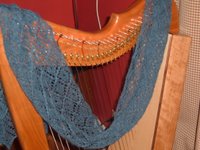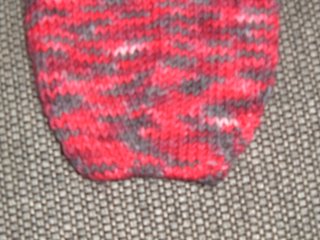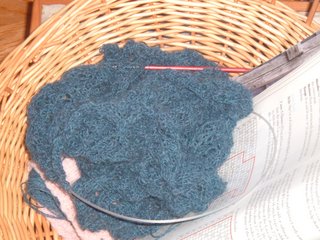At its hardest, darning is something I don't do. I haven't mastered (or even given more than one mediocre shot at) the art of laying a ground, stitching in duplicate stitch over what doesn't exist, then removing the ground and having a repaired sock. No, I try other things.

Consider this sock, which is 100% merino. It jumped into the washing machine with its mate and survived, but there was a hole. Or so the sock owner told me.
I looked and found two holes. Slightly felted holes. I decided that the way to fix this was not with easy darning, nor with hard darning, but with reknitting. So I hunted for a nice spot at which to pick up stitches, and discovered a third hole. It's tiny (the perfect size for easy darning) but evident ... so I picked up stitches right around
 the last row of the heel.
the last row of the heel.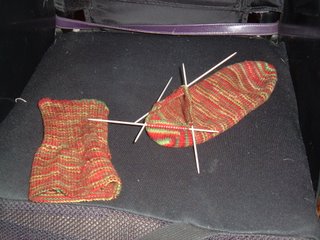 I knit the sock with size 2 needles, and I used size 0 metal needles to pick up stitches. I merrily pick-pick-picked up anything that looked like a stitch,
I knit the sock with size 2 needles, and I used size 0 metal needles to pick up stitches. I merrily pick-pick-picked up anything that looked like a stitch, and then amputated the foot. After amputation, I picked out all the loose threads I could find and ended up with two longish ends (the frizzed red and green ends in the photo. I contemplated their origin and their destination, and discovered that they were two ends of the same piece of yarn. I searched for another end, but it was fruitless. I decided not to think about that too hard, and started reknitting the leg.
and then amputated the foot. After amputation, I picked out all the loose threads I could find and ended up with two longish ends (the frizzed red and green ends in the photo. I contemplated their origin and their destination, and discovered that they were two ends of the same piece of yarn. I searched for another end, but it was fruitless. I decided not to think about that too hard, and started reknitting the leg.While knitting, I mulled over my options. Do I reknit the remainder of the sock? Or do I reknit it until I'm past where the last hole was, and graft the ribbing onto the new portion? I very quickly decided to reknit the whole thing. Knitting is more fun than grafting. That settled, I continued to knit. And knit. I began considering how long it would take me to knit the ribbing. And how long it could possibly take me to graft 60 stitches to each other. Even if it took me a minute to graft each stitch, that would still take less time than knitting the ribbing.
 So I changed my mind. I did a second amputation on the sock leg, cutting a row or two below the round of stitches where I wanted to graft. I debated picking up all the stitches on another set of needles, and decided against it.
So I changed my mind. I did a second amputation on the sock leg, cutting a row or two below the round of stitches where I wanted to graft. I debated picking up all the stitches on another set of needles, and decided against it.I grafted, and grafted, and grafted, and before I thought it possible, I was finished!
Then came a small snag. In my grafting, I'd split some of the yarn, thus insuring that it would be A Bear to remove most of the yarn I'd left in below my grafting row. There's a slight seam in there ... oh well.
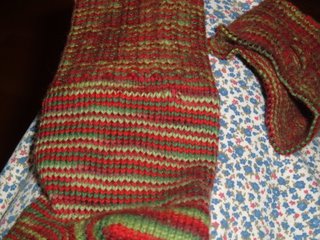
They've been returned to the sock owner, and if the seam is bothersome ... I'll get out my tweezers and embroidery scissors and pick away.
In my spare knitting time, I've started another pair of socks, FINALLY made Julia's Hat (from September of the 2006 Knitting Pattern-a-Day Calender), and been delighting the small fry of church with custom-made headbands.
And other things ... but no photos of that, yet.
